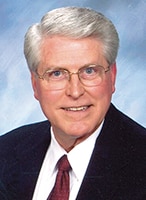 The Generous Giver
The Generous Giver
Formations: April 8, 2018
Scripture: Acts 2:44-45; 4:32-37
 Michael K OlmstedToday we focus on the formative days of the early church as it is growing and learning how to live the way of Jesus against considerable odds. What does the resurrection mean in the context of society? Where does the church fit in a world of pagan ideas and Jewish legalism? Our Gentile author, Luke, carefully puts together stories about real people and events as the Holy Spirit works. Those were times of significant changes and Barnabas was influential in those changes.
Michael K OlmstedToday we focus on the formative days of the early church as it is growing and learning how to live the way of Jesus against considerable odds. What does the resurrection mean in the context of society? Where does the church fit in a world of pagan ideas and Jewish legalism? Our Gentile author, Luke, carefully puts together stories about real people and events as the Holy Spirit works. Those were times of significant changes and Barnabas was influential in those changes.
We first meet Barnabas in Acts 4:36 where he is described as “Joseph, a Cyprian birth, who was also called Barnabas by the apostles (which translated means Son of Encouragement).” He lived up to his name when he sold his land to help the poorest members of the Jerusalem church (Acts 4), assisted the church in Antioch (Acts 11), joined Paul in preaching the gospel (Acts 13), and defended Gentile converts as fully Christian without keeping Jewish legal restrictions (Acts 15).
Luke’s depiction of the earliest church in comparison to our churches does not flatter us! Acts 2 and 4 reveal a church that daily faced uncertainty if not constant harassment by a state-recognized religious group and hostile government. Yet, as they supported one another, worshiped together in spite of their different backgrounds and steadily increased in number, that early church was united in their witness for Christ. Acts always convicts me as a modern Christian because we are too often divided by religious preferences, ideas about witnessing and missions, and a strong focus on denominational corporate structures. Yes, there were divisions and arguments over doctrinal ideas, but the New Testament reveals how those differences were overcome by the example and teachings of Jesus and the influence of people like Barnabas.
This is not a study of church finances and stewardship campaigns, but a church’s budgeting and pledge drives reveal much about priorities. I shudder when remembering the pastor of a nearby church telling his congregation every year when school ended for the summer: “Be careful to get your tithes in over the summer because God will get his money one way or another!” I am also aware of a church where the “board” requests to review income tax records of members to be sure they are tithing.
Notice Luke’s description of the Jerusalem church. They “were of one heart and soul, and no one claimed private ownership of any possessions” (4:32). When some in the fellowship were facing hunger and poverty, other members, including Barnabas, sold their possessions and gave the money to the apostles to provide help. There is no clear picture or teaching in the New Testament that all Christians should come together in a commune, surrendering all they have while being ruled by an authority figure or board. But there is an unmistakable pattern in both the Old and New Testament that God’s people share God’s love and their resources to help widows, orphans, the suffering and ill, as well as strangers in the land.
Luke offers an example worthy of replicating. In Acts 2:42 he mentions four key markers of a faithful church: “they devoted themselves to the apostles’ teaching and fellowship, to the breaking of bread and prayers,” as they studied to grow in faith; they formed a strong bond in spiritual communion and tangible generous compassion; they shared a common meal (including the Lord’s supper); and they spent time praying in their homes as well as at the Temple. In addition the apostles (leaders) bore witness to the Lord’s resurrection “with great power” (4:33).
Barnabas (Joseph) was a Hellenistic Jew from Cyprus, so he grew up outside Judea and spoke Greek as his first language. He was a Levite, born a member of the class of musicians and helpers who served beside the priests in the daily rituals of the Jerusalem Temple. Levites, like the priests, were supported by the tithes the Jews brought to the Temple. We suspect Barnabas originally went to Jerusalem to fulfill his family dream to serve the Lord in the Temple rituals. Was he among the 3,000 converted at Pentecost (Acts 2:37-42)? Whenever Barnabas came to faith in Christ his life was totally impacted in every way.
As mentioned earlier, Barnabas sold his land and gave the proceeds to help those in the church who were suffering, probably widows and orphans from a Hellenistic background like Barnabas. Luke uses the contrast between Barnabas’ love for God and compassion for those in need to Ananias and Sapphira who also sold some land and publicly gave money to the church for those suffering. The striking difference is that the couple publicly lied, pretending to give the total price of the sale. Acts 5:1-11 tells the tragic tale. This is not a stewardship by fear story. Nobody was required to give and there were no established standards for percentage giving. These were two people who wanted to look religiously good without giving all their profit away!
What a contrast between selfishness, religious pretense and generosity born of faith in Christ. As we continue to follow the story of Barnabas we will see the grace of God shape this man’s heart as he stands up for the Apostle Paul, formerly the Pharisee Saul and persecutor of the church. When the Jerusalem church was afraid to trust Paul, Barnabas stepped in to vouch for Paul as a bold proclaimer of the risen Christ (Acts 26-27).
In spite of all the modern church may claim to accomplish, church planting, missionary programs, theological education and compassionate ministries, the greatest marks of spiritual depth are found in acts of compassion and generosity, in what we give away without expecting anything in return. It is in those kinds of settings we can win a hearing for the gospel. Does God see a church that holds on to its empire, or a people who are generous like Barnabas, giving everything away, exhibiting the grace of God in Christ? Barnabas, the Levite, went from performing the religious songs of the Temple rituals to become a follower of Jesus, singing the melody of God’s love wherever he found himself.
Retired after almost 50 years in pastoral ministry, Michael K. Olmsted enjoys family, supply preaching and interim work, literature, history, the arts and antiques.
Formations is a curriculum series from Smyth & Helwys Publishing, Inc. through NextSunday Resources.
The PDF download requires the free Acrobat Reader program. It can be downloaded and installed at https://get.adobe.com/reader (uncheck optional offers first).


